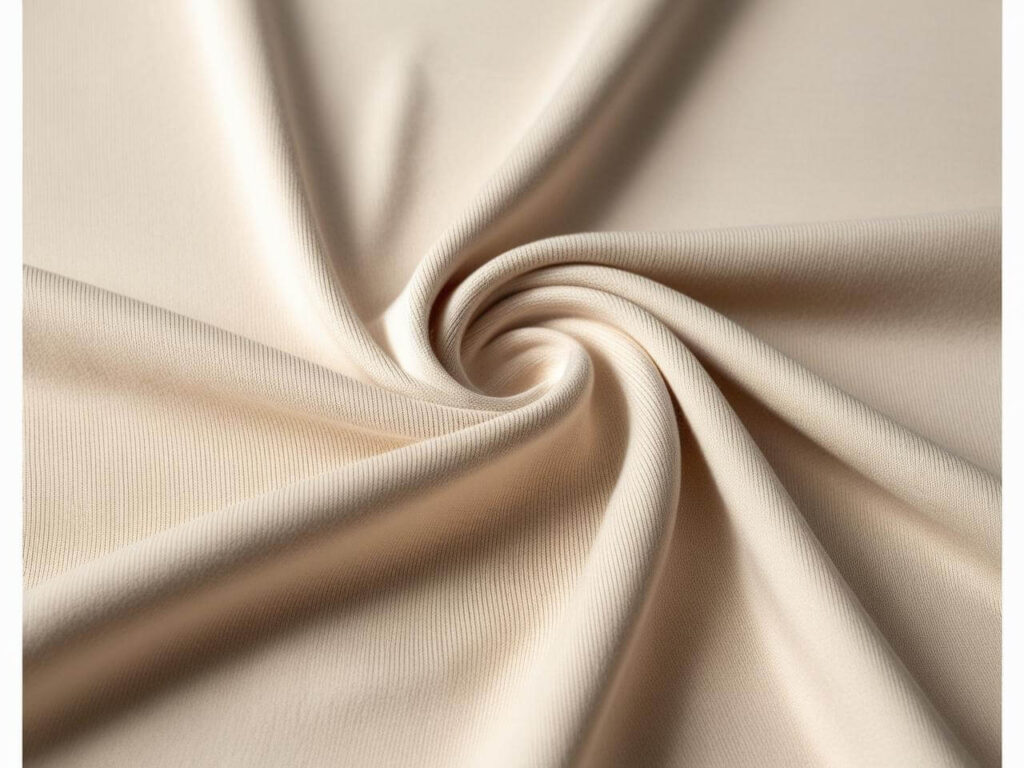Introduction
I’ve always loved fabrics that combine comfort, flexibility, and durability, and interlock fabric is one of those perfect materials. Whether you’re shopping for T-shirts, activewear, or baby clothing, interlock fabric stands out for its smooth texture, excellent elasticity, and long-lasting quality.
But what exactly is interlock fabric, and how does it compare to single jersey or rib knit? In this guide, I’ll break down its properties, advantages, and best applications.
What You’ll Learn in This Guide
✔ What interlock fabric is and how it’s made
✔ The key characteristics that make it ideal for clothing
✔ How interlock compares to single jersey, rib knit, and woven fabrics
✔ Its best uses and why it’s preferred for high-quality garments
What is Interlock Fabric?
Interlock fabric is a double-knit textile known for its smooth texture, elasticity, and durability. Unlike single jersey fabric, which has a smooth front and a looped back, interlock fabric has identical surfaces on both sides, making it thicker, softer, and more stable.
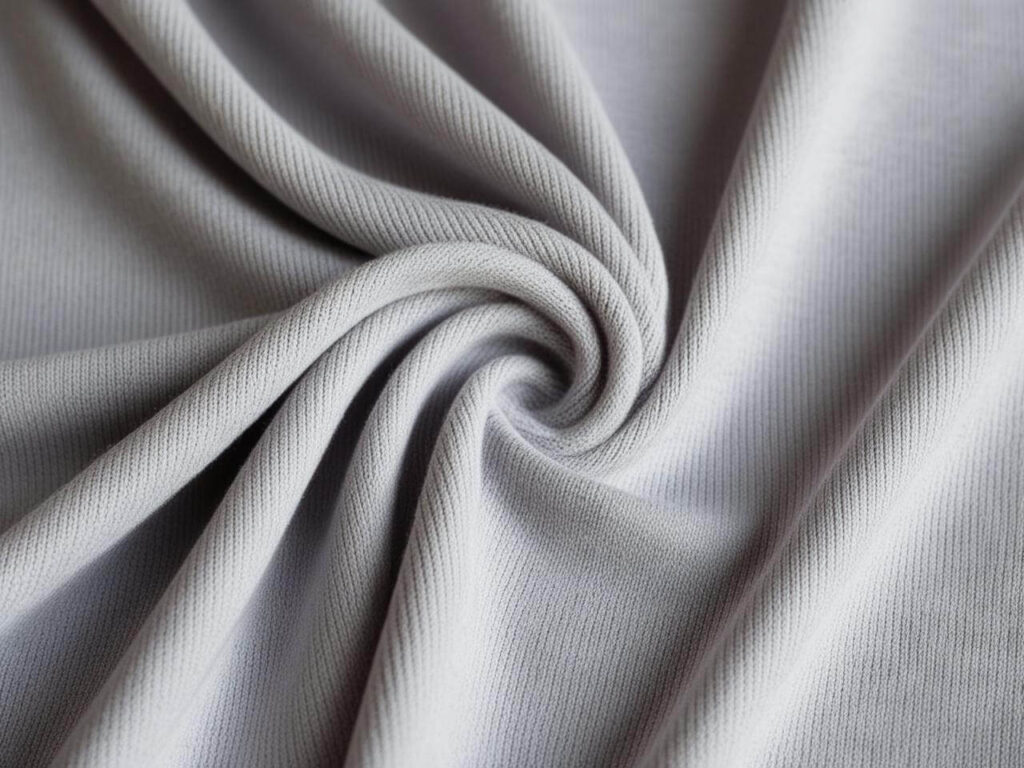
📌 Key Features of Interlock Fabric
- Double-knit structure – Made using two sets of needles, resulting in a denser, more structured fabric.
- Smooth on both sides – Unlike single jersey, both sides of interlock fabric look identical and refined.
- Stretch & elasticity – Naturally more flexible than woven cotton, with better shape retention.
- Thickness & durability – Heavier than single jersey, making it less prone to curling and wear.
- Best for – T-shirts, babywear, leggings, and activewear due to its softness and stability.
| Property | Description |
| Texture | Smooth on both sides |
| Stretchability | Naturally elastic, holds shape well |
| Breathability | Moderate (less than single jersey) |
| Thickness | Medium to heavy |
| Common Materials | Cotton, polyester, spandex blends |
| Best Uses | Sportswear, baby clothing, high-end T-shirts |
🎥 Recommended YouTube Video
📌 Fabric 101 – Interlock Knit Fabric
🎬 This video explains the structure and characteristics of interlock fabric, helping viewers understand its applications in fashion and sportswear.
Characteristics of Interlock Fabric
Interlock fabric is highly valued for its smooth texture, elasticity, and durability, making it a preferred choice for sportswear, babywear, and premium casualwear. Below are its key characteristics:
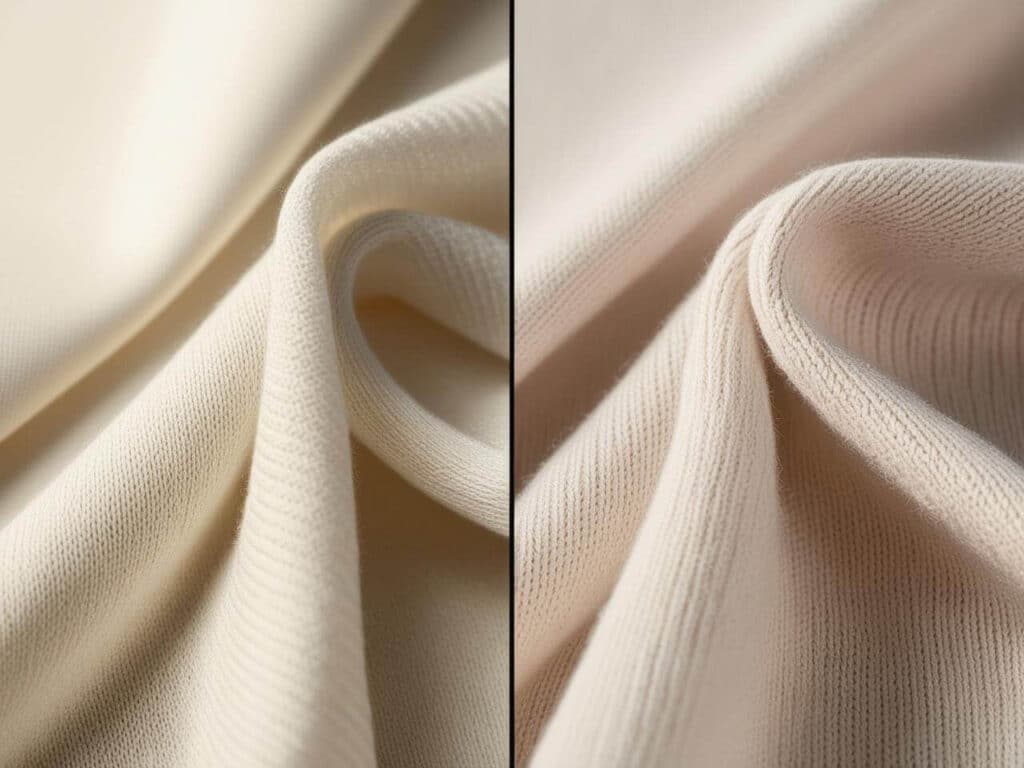
📌 1. Smooth & Uniform Texture
- Unlike single jersey, which has one smooth and one looped side, interlock fabric is smooth on both sides, giving it a luxurious feel.
- The tight, uniform weave makes it ideal for premium apparel like high-quality T-shirts and polo shirts.
📌 2. Elasticity & Shape Retention
- Naturally stretchy due to its double-knit structure, providing a comfortable and snug fit.
- Holds its shape well, making it less likely to sag compared to single jersey fabric.
📌 3. Thickness & Durability
- Heavier and denser than single jersey, providing extra warmth and increased longevity.
- The interlocking loops create a firmer fabric, making it less prone to holes or fraying.
📌 4. Wrinkle Resistance & Low Maintenance
- Less prone to wrinkles than woven cotton, making it a great choice for everyday wear.
- Easy to wash and care for, especially in cotton-polyester blends.
📌 5. Moderate Breathability & Moisture Control
- Not as breathable as single jersey, but warmer and more insulating.
- Moisture-wicking properties can be improved with polyester or spandex blends.
🎥 Recommended YouTube Video
📌 Understanding the Differences Between Interlock & Single Jersey Fabrics
🎬 A useful guide explaining why interlock fabric is stronger, thicker, and more stretchable than single jersey.
How is Interlock Fabric Made?
Interlock fabric is produced using a double-knit process, which makes it thicker, stretchier, and more durable than single-knit fabrics like jersey. This unique knitting technique gives interlock fabric its smooth, structured feel.
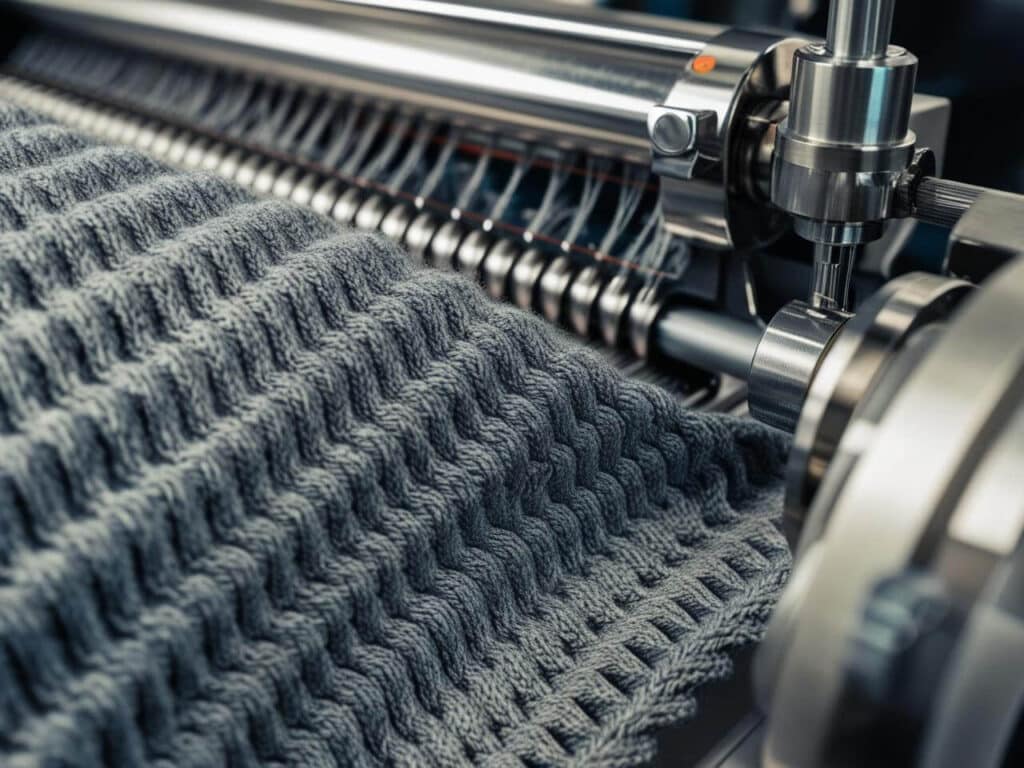
📌 1. Knitting Process
- Double-knit structure – Unlike single jersey fabric, which uses one set of needles, interlock fabric is made with two sets of needles working in opposite directions.
- This creates identical smooth surfaces on both sides, giving the fabric extra thickness and a luxurious feel.
- The result is a stable, firm fabric that resists curling and holds its shape well.
📌 2. Types of Interlock Fabric
| Type | Composition & Properties | Best Uses |
| 100% Cotton Interlock | Soft, breathable, but slightly less durable | Babywear, premium T-shirts |
| Polyester Interlock | More durable, moisture-wicking, wrinkle-resistant | Sportswear, activewear |
| Spandex Blended Interlock | High stretch, retains shape well | Leggings, compression wear |
📌 3. Finishing & Treatments
To enhance the performance of interlock fabric, manufacturers apply various finishing techniques, such as:
- Pre-shrinking – Prevents excessive shrinkage after washing.
- Anti-pilling treatment – Reduces fuzz and enhances fabric longevity.
- Moisture-wicking finish – Improves sweat absorption for activewear.
🎥 Recommended YouTube Video
📌 How Interlock Fabric is Made – Double-Knit Process
🎬 A behind-the-scenes look at the interlock fabric manufacturing process.
Uses & Applications of Interlock Fabric
Interlock fabric’s softness, stretch, and durability make it a go-to material for casualwear, activewear, and baby clothing. Here’s where you’ll commonly find it:
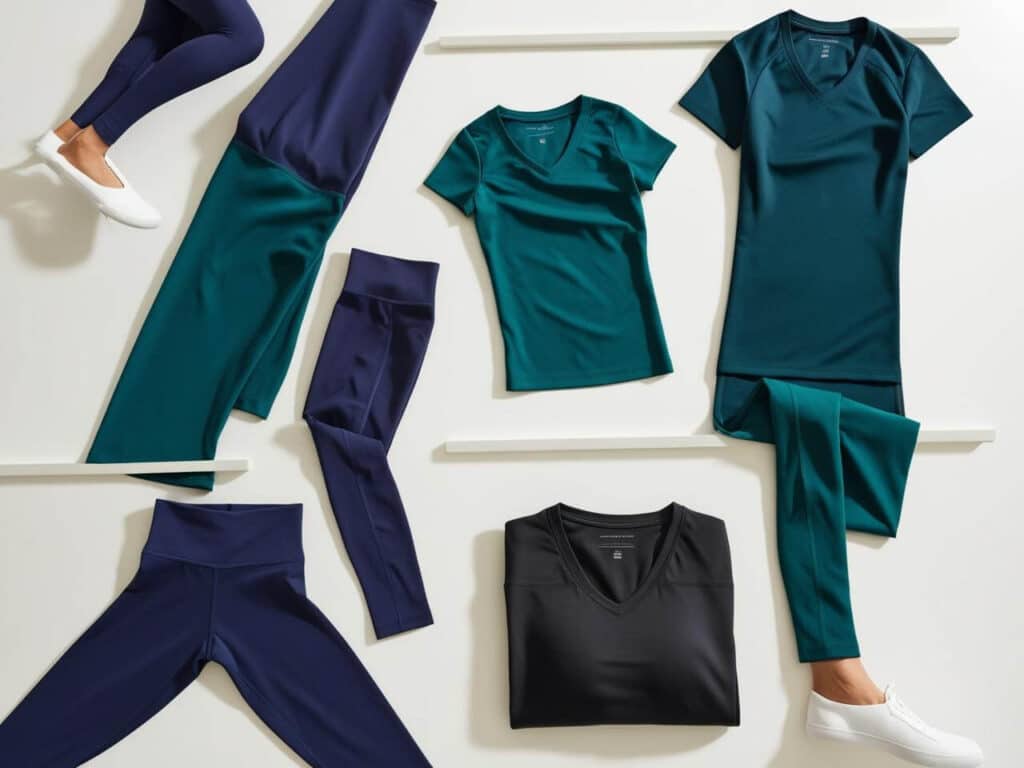
📌 1. Clothing Industry
Interlock fabric is widely used in high-quality apparel where comfort and flexibility are key.
| Garment Type | Why Interlock Fabric is Used |
| T-Shirts & Polo Shirts | More structured than single jersey, holds its shape well |
| Activewear & Sportswear | Moisture-wicking, stretchable, and durable |
| Babywear & Kids’ Clothing | Soft, hypoallergenic, and gentle on the skin |
| Loungewear & Pajamas | Ultra-soft and breathable, perfect for sleepwear |
| Leggings & Yoga Wear | High stretchability, contours to the body |
✅ Activewear & leggings benefit from interlock’s stretch and durability, making it a staple in sportswear manufacturing.
📌 2. Home & Textile Applications
Interlock fabric is also used for comfortable and flexible household textiles.
| Application | Why It’s Ideal |
| Bedsheets & Pillowcases | Soft and breathable for comfort |
| Curtains & Upholstery | Structured and wrinkle-resistant |
| Eco-friendly Fabric Bags | Durable and reusable |
📌 3. Special Uses
- Compression wear – When blended with spandex, interlock fabric provides excellent elasticity.
- Premium fashion & sustainable textiles – Increasingly used in organic cotton interlock for eco-friendly garments.
🎥 Recommended YouTube Video
📌 Why Interlock Fabric is Great for Activewear
🎬 A video explaining how interlock fabric is ideal for athletic and performance wear.
Interlock vs Other Fabrics
To better understand the advantages of interlock fabric, let’s compare it with single jersey, rib knit, and woven cotton fabrics.
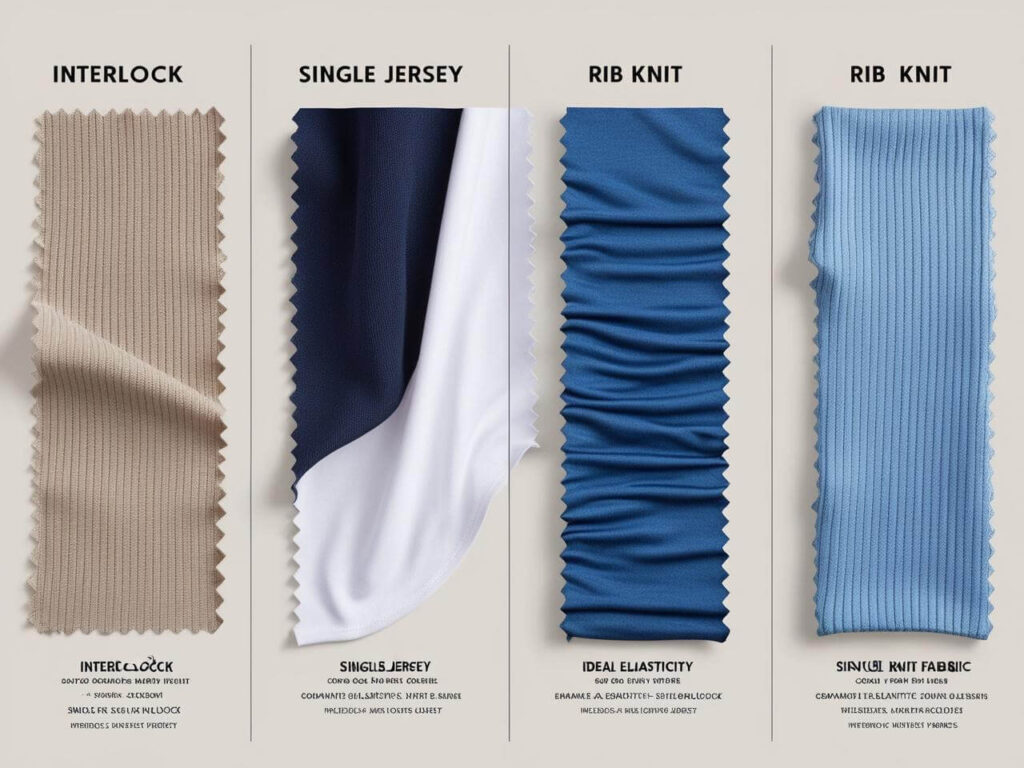
📌 1. Interlock vs. Single Jersey
| Feature | Interlock Fabric | Single Jersey Fabric |
| Structure | Double-knit, both sides smooth | Single-knit, smooth on one side, looped on the other |
| Stretchability | Naturally elastic, holds shape well | Moderate stretch, less shape retention |
| Thickness | Thicker and more insulating | Lightweight and breathable |
| Best Use | Activewear, leggings, babywear | T-shirts, casualwear |
✅ Key Takeaway: Interlock is thicker and more durable, while single jersey is lighter and more breathable.
📌 2. Interlock vs. Rib Knit
| Feature | Interlock Fabric | Rib Knit Fabric |
| Texture | Smooth on both sides | Raised ribs throughout |
| Elasticity | High natural stretch, but firm | Very stretchable, flexible fit |
| Best Use | T-shirts, sportswear, babywear | Cuffs, collars, fitted clothing |
✅ Key Takeaway: Rib knit is more elastic, making it ideal for cuffs and fitted garments, while interlock provides structure and comfort.
📌 3. Interlock vs. Woven Cotton
| Feature | Interlock Fabric | Woven Cotton |
| Fabric Type | Knitted | Woven |
| Stretchability | Naturally flexible | No stretch unless blended with spandex |
| Breathability | Moderate | High |
| Best Use | Sportswear, babywear, loungewear | Formalwear, dress shirts, bedding |
✅ Key Takeaway: Interlock is softer and stretchier, while woven cotton is more structured and formal.
🎥 Recommended YouTube Video
📌 Interlock vs Jersey Fabric – Which is Better?
🎬 A clear comparison explaining the differences between interlock and single jersey fabrics.
Pros & Cons of Interlock Fabric
While interlock fabric is a versatile and high-quality textile, it has both advantages and limitations. Here’s a detailed breakdown:
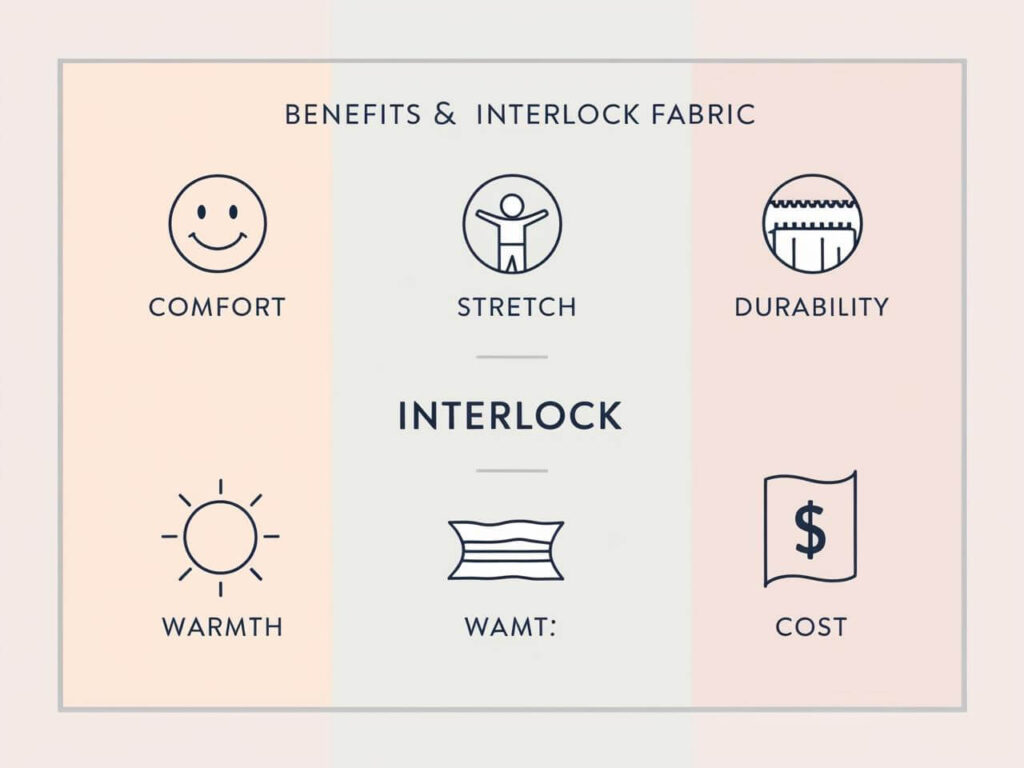
📌 1. Advantages of Interlock Fabric
✅ Soft & Comfortable – Smooth on both sides, providing a luxurious feel.
✅ Naturally Stretchy – Offers great elasticity and shape retention without spandex.
✅ Thicker & Warmer – More insulating than single jersey, making it ideal for cooler climates.
✅ No Curling Edges – Unlike single jersey, interlock fabric does not curl, making it easier to sew.
✅ Durable & Long-Lasting – Stronger and less prone to fraying or pilling.
✅ Wrinkle-Resistant – Holds its shape well, requiring minimal ironing.
📌 2. Disadvantages of Interlock Fabric
❌ Less Breathable Than Single Jersey – Can feel warmer, making it less ideal for hot climates.
❌ More Expensive – The double-knit process increases the cost compared to single jersey.
❌ Heavier Weight – Not as lightweight and flowy as single-knit fabrics.
❌ Absorbs Moisture – 100% cotton interlock can hold moisture instead of wicking it away.
🎥 Recommended YouTube Video
📌 Interlock Fabric Pros & Cons – What You Need to Know
🎬 A helpful video outlining the advantages and disadvantages of interlock fabric.
FAQs: Everything You Need to Know About Interlock Fabric
To address common questions about interlock fabric, here are concise and informative answers optimized for search intent.
❓ Is interlock fabric good for summer?
✔ It depends. Interlock fabric is thicker than single jersey, making it warmer. However, lightweight cotton interlock blends can still be breathable and suitable for mild summer wear.
❓ What is the difference between interlock and single jersey fabric?
✔ Interlock fabric has identical smooth surfaces on both sides, making it thicker, stretchier, and more durable.
✔ Single jersey fabric has one smooth and one looped side, making it lighter, more breathable, and softer.
❓ Does interlock fabric stretch?
✔ Yes! Due to its double-knit structure, interlock fabric has natural elasticity, and when blended with spandex, it offers enhanced flexibility.
❓ Is interlock fabric 100% cotton?
✔ Not always. While many interlock fabrics are 100% cotton, there are also blends with polyester, rayon, and spandex for improved performance.
❓ What is interlock fabric best used for?
✔ Most commonly used for:
- T-shirts & premium polo shirts
- Activewear & sportswear
- Babywear & kids’ clothing
- Loungewear & pajamas
- Leggings & compression wear
🎥 Recommended YouTube Video
📌 Interlock Fabric Explained – Common FAQs
🎬 A quick guide answering the most common questions about interlock fabric.
Final Thoughts: Why Interlock Fabric is a Great Choice
Interlock fabric is a premium-quality textile that offers exceptional softness, elasticity, and durability, making it a staple in sportswear, babywear, and premium casualwear. Whether you’re looking for a structured T-shirt, high-stretch leggings, or comfortable pajamas, interlock fabric provides superior comfort and long-lasting performance.
✔ Key Takeaways
✅ Soft & Comfortable – Double-knit structure makes it smooth on both sides.
✅ Naturally Stretchy – Retains shape well without added spandex.
✅ Thicker & Warmer – More insulating than single jersey, great for cooler climates.
✅ Ideal for Multiple Applications – Used in premium T-shirts, activewear, baby clothing, and loungewear.
✅ Durable & Wrinkle-Resistant – Holds up well to washing and everyday wear.
If you’re considering interlock fabric for your next clothing project or shopping decision, it’s a reliable, comfortable, and long-lasting choice.
